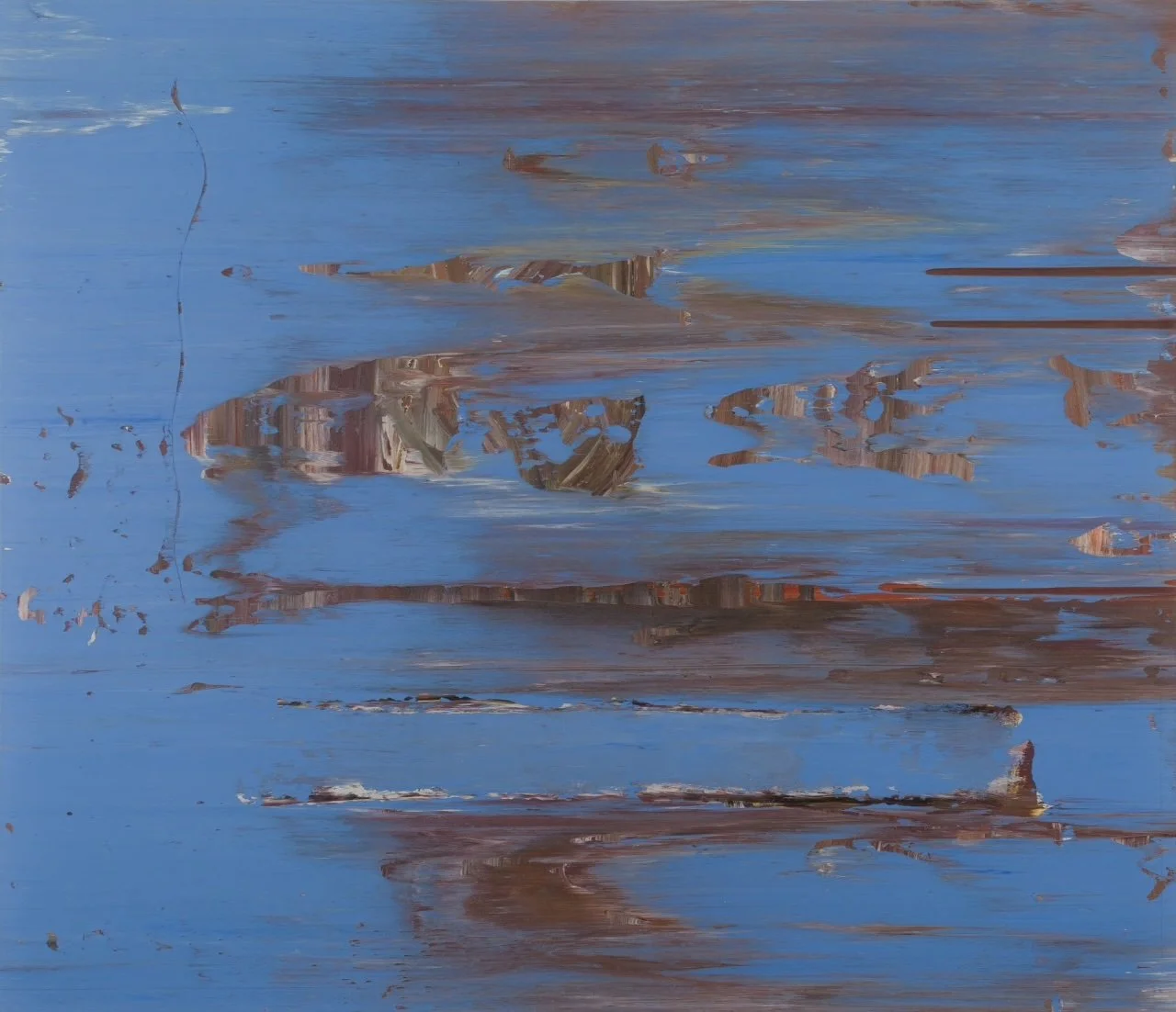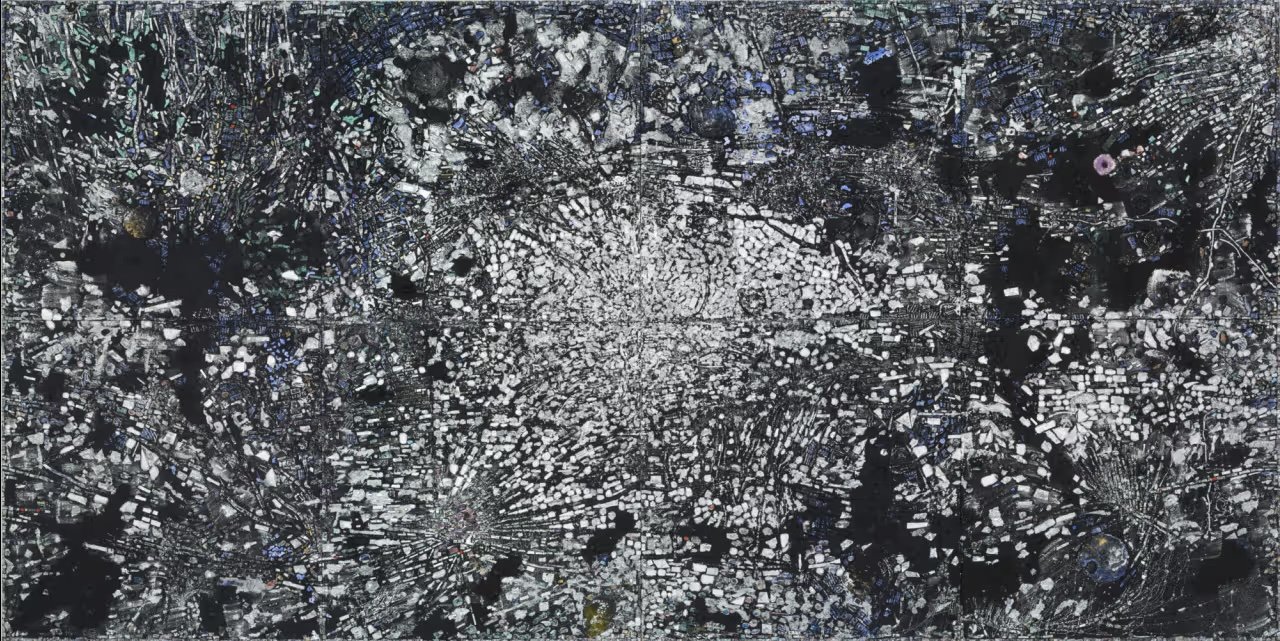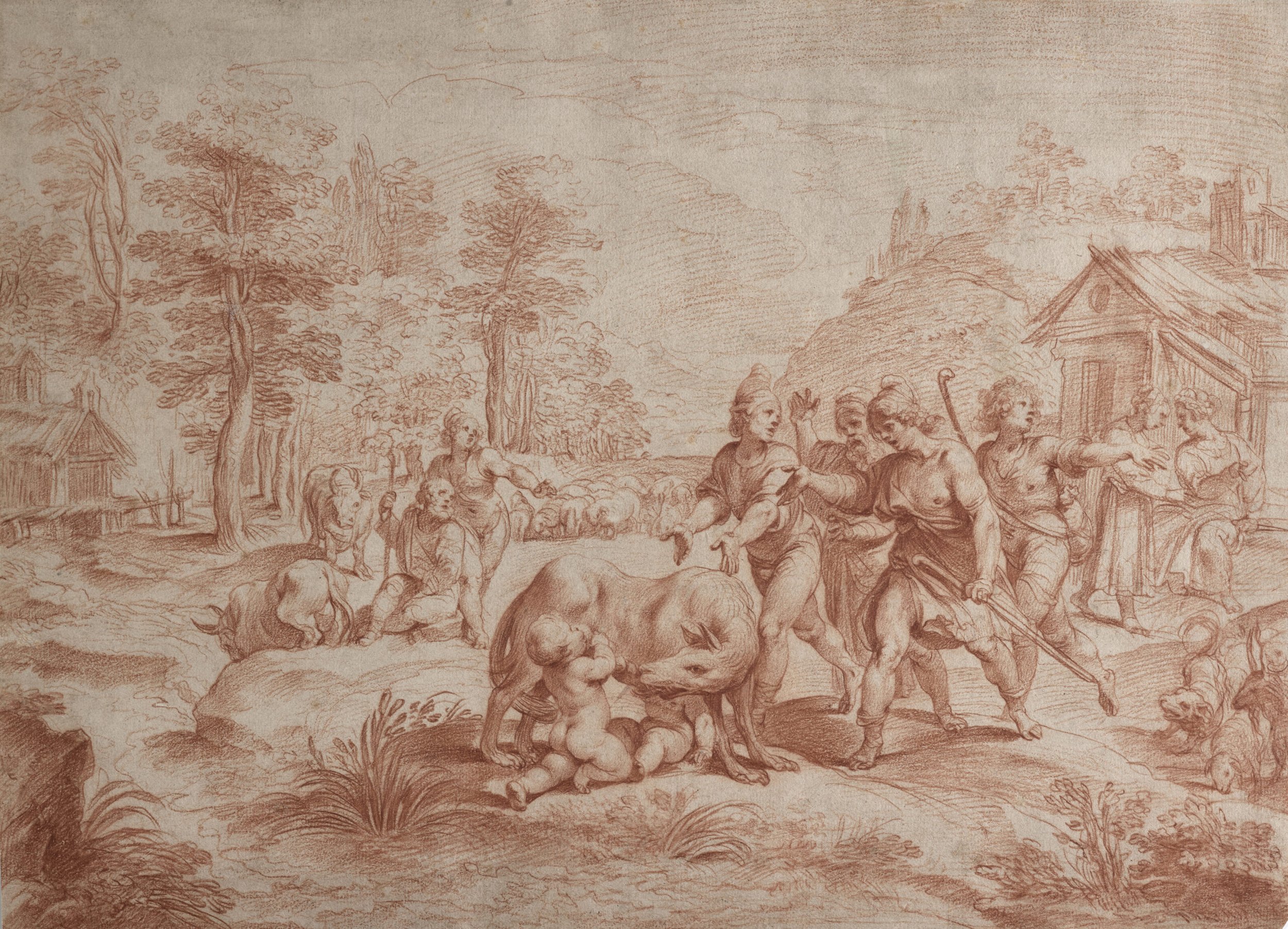THE NEW CRITERION, April 2025
On “Caspar David Friedrich: The Soul of Nature,” at the Metropolitan Museum of Art, New York.
For those of us who prefer our art soft-baked, Caspar David Friedrich (1774–1840) can seem irredeemably hard-boiled. This painter of crucified peaks and mystified valleys, of gnarled trees and ruined churches, all underlit in a raking gloam, looked out to the infinite and wanted to perceive even more.
Pairing pictorial ambition with technical restraint, Friedrich filled his canvases with an emptiness that made him the paragon of German Romanticism—and the bane of critics from his time to our own. “It is true presumption,” wrote his contemporary Friedrich von Ramdohr, “when landscape painting wants to slink into the church and creep up on the altars.” Nearly two centuries on, Hilton Kramer called the artist a “second-rate talent” whose claim to first-rate status is nothing less than a “libel on the art of the great Romantic painters.”
Supersized, vacuous, and unabashedly over-the-top, Friedrich’s paintings no doubt planted the seeds for an invasive spiritualism in art. Turning to the “unknowable hereafter,” he proclaimed, he aimed for that “darkness of the future! Which is only ever sacred intuition, to be seen and recognized only in belief.” From German nationalism to National Socialism to radical environmentalism, his compositions became the ready vessels for a brimful of bad ideas. At the least, it is safe to say, a little bit of Friedrich goes a very long way.
For this reason, in the United States, Friedrich up until now has been the beneficiary of his own limited exposure. The first Friedrich oil to enter an American museum came only in 1984, when the Kimbell Art Museum in Fort Worth acquired the diminutive Mountain Peak with Drifting Clouds (ca. 1835). Since then, fewer than a half dozen other U.S. institutions have acquired works by the artist, whose paintings are largely concentrated in German collections.
Caspar David Friedrich, Self-Portrait, 1800, Black chalk on wove paper, Statens Museum for Kunst, Copenhagen.
At the same time, loan exhibitions of his major oils, mostly held in the Alte Nationalgalerie of the Staatliche Museen zu Berlin, the Staatliche Kunstsammlungen Dresden, and the Hamburger Kunsthalle, have been notably circumscribed. The first large stateside Friedrich exhibition took place in 1990 with “The Romantic Vision of Caspar David Friedrich: Paintings and Drawings from the U.S.S.R.” In 2001, after its acquisition of Two Men Contemplating the Moon (ca. 1825–30), the Metropolitan organized what was only the second Friedrich show in America, with just seven of his paintings and two drawings.
So “Caspar David Friedrich: The Soul of Nature,” the exhibition with over seventy-five of his works now on view at the Metropolitan Museum of Art, tied to the 250th anniversary of his birth and a blockbuster year of shows in Germany, is not only a major event.1 Drawing from the three significant holdings of Friedrich’s art in Germany and over thirty other lenders, it is also the first true retrospective of his work in the United States. But is this all too much Friedrich for his (and our) own good?
Organized by Alison Hokanson, a curator in the Metropolitan’s Department of European Paintings, and Joanna Sheers Seidenstein, an assistant curator in the Department of Drawings and Prints, “The Soul of Nature” makes every effort to bring Romanticism’s high striver back down to sea level. A winding path through a selection of mostly smaller works, arranged in the Met’s most compressed special-exhibition hall, here painted in muted tones, forces us into close proximity with Friedrich’s art while metering out his greatest hits. As a few cut-out walls offer glimpses of the larger paintings that follow, the slow approach keeps the presentation gratefully scaled down and anti-monumental.
No doubt informed by Seidenstein’s specialization in works on paper, the exhibition also begins and ends with Friedrich’s drawings and prints. This intelligent framing encourages us to focus on Friedrich as draftsman first and ideas-man second. The approach rightly illuminates the formal innovations that Friedrich brought to his canvases after first working them out on paper. There can be no argument that Friedrich was an astonishing illustrator. His drawings remain among his most accomplished works and certainly his most compelling. As presented here, the virtuosity that Friedrich displayed on paper might just be his greatest achievement.
Caspar David Friedrich, View of Arkona with Rising Moon, 1805–06, Brown ink & wash over pencil on paper, Albertina Museum, Vienna.
We can already see these accomplishments in his self-portrait of 1800 (Statens Museum for Kunst, Copenhagen)—an assured, penetrating work of black chalk on wove paper. Selections of his plant and tree studies from June 1799, on loan from the Kupferstichkabinett, Staatliche Museen zu Berlin, reveal an artist using pencil, ink, and particularly wash to render an assembly of leaves to remarkable visual effect. Testing out his washes on the edges of the paper, Friedrich could already deploy layers of shading to create a deep dimensionality.
These exacting studies and close observations led to his first major breakthrough: View of Arkona with Rising Moon (1805–6, Albertina Museum, Vienna). This large work on paper, two feet high and over three feet wide, one of a series of iterations of the composition, employs several pictorial strategies that Friedrich revisited throughout his career. Drawing upon his studies of the island of Rügen in 1801, looking north and east from Vitt Beach towards Cape Arkona and the Baltic Sea, Friedrich lights his scene as though from behind the frame. A rising moon on the horizon fluoresces the ocean mist and rippling waves. At the same time, an imposing foreground of rocks, hulls, masts, fences, and walls—partially obscuring our more distant view and nearly rendered in silhouette—is seemingly cast into an ever greater obscurity.
With our footing uncertain, Friedrich pulls us into the feeling of the image, deliberately making our perspective unstable. He knows how raking light can dazzle and disorient more than it reveals, with the glowing horizon merely blinding us to the nearby shadows. Like most observers, my first response to this image of studied obscurantism, of tiny details and near illegibility, was to blink.
View of Arkona with Rising Moon was a sensation when first exhibited in Dresden in 1806. In 1822, it entered the possession of Prince Albert Casimir of Saxony, through which it formed part of the founding collection of the Albertina. The work’s greatest mystery is the question of just how an artist could have created an image of such precision. One answer was the traditional education in draftsmanship that Friedrich received in Greifswald and Copenhagen. The other was the adoption of new media—for example, sepia wash used on smooth wove paper as opposed to bister (from burned wood) on textured laid paper—that had been introduced to Dresden by the academician Jakob Crescentius Seydelmann.
Caspar David Friedrich, Wanderer above the Sea of Fog, ca. 1817, Oil on canvas, Hamburger Kunsthalle.
In her catalogue essay, Seidenstein expands on the importance of sepia wash to Friedrich’s developing tonalities. The pigment was only recently developed into a shelf-stable medium in Italy (sepia from seppia, the Italian word for cuttlefish, from which the ink is derived). Applied in layers of slow-drying glazes, sepia gave Friedrich a means of nuanced illumination that at the same time concealed the hand of the artist almost entirely from view.
In his studied and detailed unfolding of landscape—placing the viewer in an uncertain foreground, obscuring the background, and effacing the reference points of middle ground—Friedrich locates us in places where we would never otherwise go and that he would not necessarily visit himself. Most of his finished landscapes in fact were confections. He painted the peaks of the Watzmann, as in the assured canvas of 1824–25 from the Alte Nationalgalerie, Staatliche Museen zu Berlin, but he never traveled south to see the actual alpine summit.
Friedrich was not shy in using animistic anthropomorphism and religious imagery together for their sentimental effects. Nor did he refrain from squeezing every moonrise and sunset of their last lumen. As developed by the philosopher Friedrich Wilhelm Joseph Schelling, Friedrich’s sense for Naturphilosophie, for a “world soul,” turned every tree into a figure and every branch into a grasping hand. His interest in landscape was also nationalistic. Often depicting himself in traditional (and for a time illicit) German garb, he aimed to capture “our German sun, moon, and stars, our rocks, trees, and vegetation, our plains, seas, and rivers.” Surveying their abundance at the Metropolitan, as Friedrich turned from drawing to painting after 1807, I would have been fine if some of these suns, moons, and stars had remained in Germany. The same goes for Friedrich’s series of hilltop crucifixes, all illuminated in a sunset glow, to which we can only ascribe another German notion, that of pure kitsch.
There are nevertheless several highlights here, some of them on view in the United States for the first time. Monk by the Sea (1808–10, Alte Nationalgalerie, Staatliche Museen zu Berlin) is one such example. A small, solitary figure looks out at the empty, wine-dark sea. The open, unmoored atmosphere of this large work is its most notable feature, ever more so after studies of its underpainting reveal that Friedrich removed several ships from view, untying us from any anchoring in its middle ground. It is just a shame that the condition of this work is now marred by several brown streaks down its surface, perhaps due to the discoloration of Friedrich’s use of smalt—a semi-transparent blue pigment made from crushed glass that extended to canvas those nuanced glazing practices he first developed in sepia, but one that is notoriously unstable.
Caspar David Friedrich, Cave in the Harz, ca. 1837, Brown ink & wash with pencil on paper, The Royal Danish Collection, Copenhagen.
Other attractions here are works that stand apart in subject matter from the rest, in particular the domestic Woman at the Window (1822, Alte Nationalgalerie, Staatliche Museen zu Berlin). A selection of works by Johan Christian Dahl, Carl Gustav Carus, and August Heinrich—all contemporary to Friedrich and drawn mostly from the Met’s collection—helps to place the subject’s pictorial achievements in his time. So too does Caspar David Friedrich in His Studio (1811, Hamburger Kunsthalle), a portrait by Georg Friedrich Kersting that shows the supreme draftsman balancing his hand on a mahl stick next to his triangles and T-squares. It is regrettable that Friedrich’s magisterial Sea of Ice of 1823–24 has not traveled here from Hamburger Kunsthalle, but the tiny Rocky Reef off the Seacoast (ca. 1824, Staatliche Kunsthalle Karlsruhe) conveys some of that same Fortress of Solitude crystallization.
The big get of this exhibition is without a doubt Wanderer above the Sea of Fog (ca. 1817), here on loan for the first time from Hamburger Kunsthalle. This work, now an icon of Western painting, illustrates the cover of the exhibition catalogue, not to mention dorm-room posters the world over. The image of a solitary windswept climber, surmounting a craggy peak and surveying the misty mountains below, deploys all of Friedrich’s tropes, in particular that of the Rückenfigur, or back figure, depicted in a vertiginous silhouette. Like many ubiquitous images, the painting is smaller in person than you might expect. The foreground and background also interact in more subtle ways than you can observe in reproduction, with the symmetry of fog and ridgeline coming together at the center of the floating figure like two wings.
Friedrich’s reputation waned shortly after he painted this image, as taste for his speculative school of landscape, based in Dresden, moved on to the more clinical eye of the Düsseldorf Academy. As his health deteriorated, he turned again to paper and the precise sepia washes that first made his career. In its inchoate abstraction, tempered only by tiny tufts of grass, Cave in the Harz (ca. 1837) is a gravitational tour de force. The same must be said of Dolmen near Gützkow (ca. 1837), also from the Royal Danish Collection. In this neolithic burial site, of boulders pressing on stone, Friedrich envisions a prehistoric cemetery. The desolate hilltop also anticipates the death, just three years later, of this most modern of German artists.
“Caspar David Friedrich: The Soul of Nature” opened at the Metropolitan Museum of Art, New York, on February 8 and remains on view through May 11, 2025.











